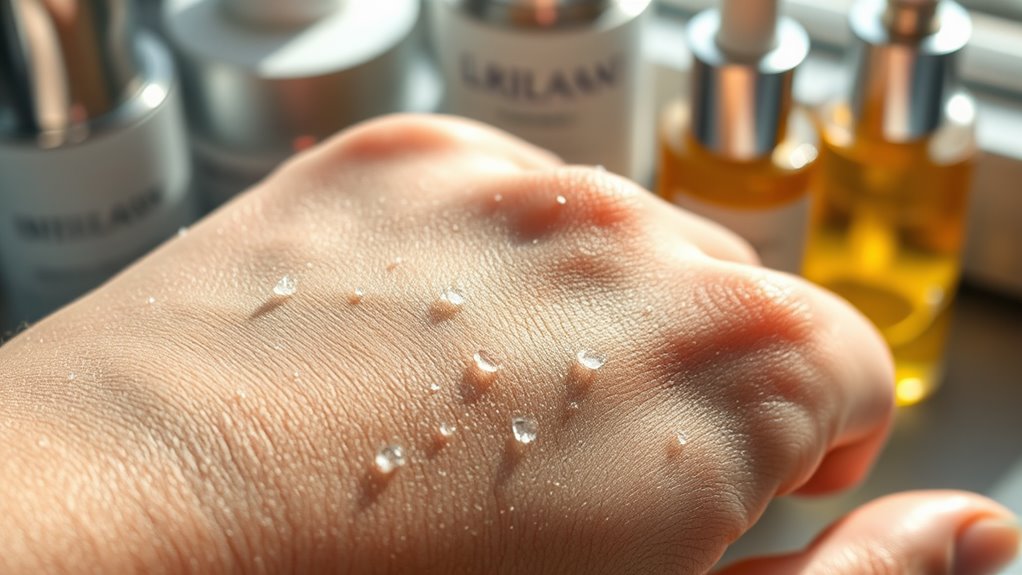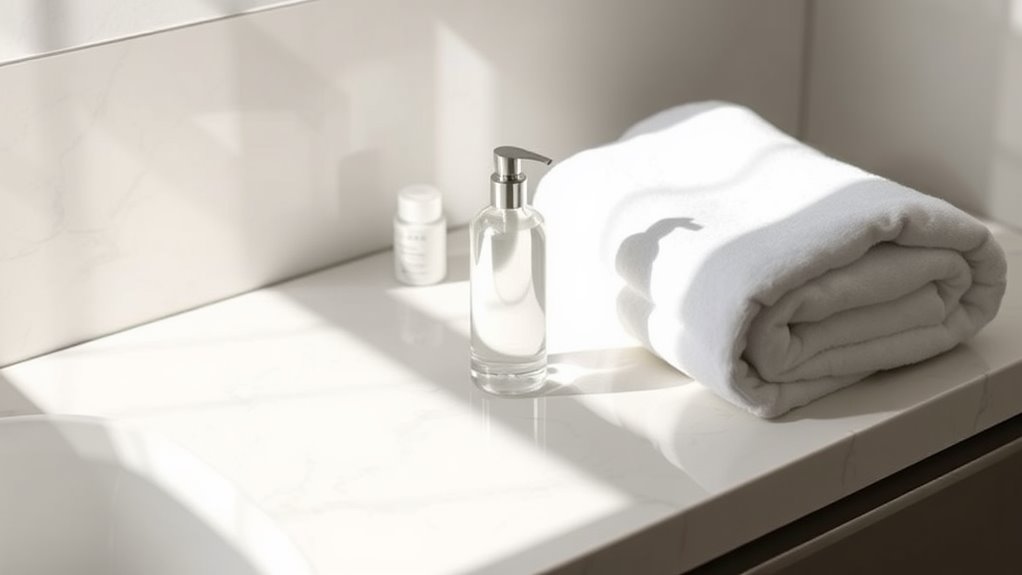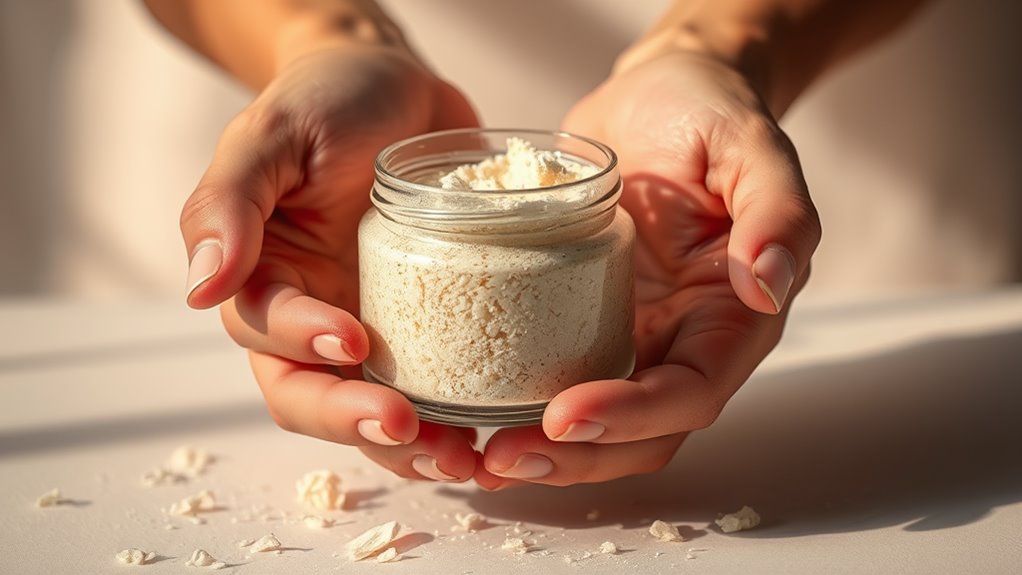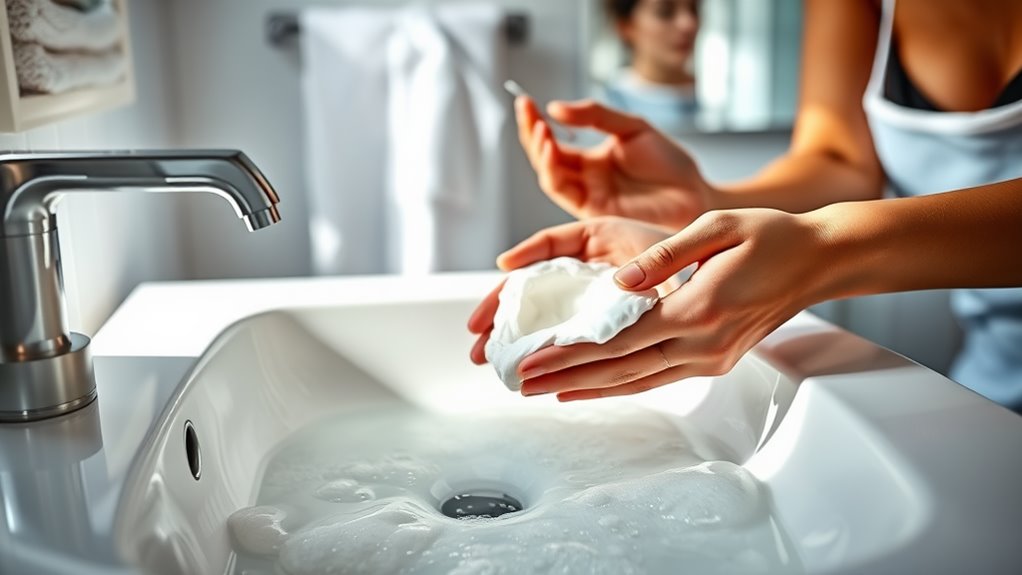Why Skipping Exfoliation Could Be the Reason Your Skin Feels Rough
Skipping exfoliation can cause a buildup of dead skin cells, leading to a rough and uneven texture. As you age, the natural shedding of skin slows down, making it essential to regularly exfoliate. Neglecting this process not only dulls your complexion but also hinders the absorption of skincare products. By incorporating exfoliation into your routine, you can enhance skin smoothness and promote healthier skin. Discover the various methods and tips to achieve optimal results.
Key Takeaways
- Dead skin cell accumulation from skipping exfoliation leads to a rough, uneven skin surface.
- Without regular exfoliation, skin texture becomes dull and lacks smoothness.
- Neglecting to exfoliate reduces product absorption, hindering skincare effectiveness.
- Over time, skipping exfoliation can exacerbate skin issues like breakouts and roughness.
- Regular exfoliation promotes cell turnover and stimulates collagen production for healthier skin.
The Importance of Exfoliation for Skin Health
Exfoliation plays a crucial role in maintaining healthy skin, as it helps remove dead skin cells and promotes cell turnover.
By incorporating regular exfoliation into your routine, you’ll experience numerous benefits of exfoliation. For instance, it enhances your skin’s texture, revealing a smoother and more radiant surface.
Additionally, exfoliation boosts the effectiveness of your skincare products by allowing better absorption of active ingredients. This process also aids in unclogging pores, reducing the likelihood of breakouts and promoting a clearer complexion.
Regular exfoliation can even stimulate collagen production, which is vital for maintaining skin elasticity and reducing the appearance of fine lines. Furthermore, neglecting this crucial step can lead to rough and uneven skin texture, highlighting the importance of consistent exfoliation in achieving optimal skin health.
How Dead Skin Cells Accumulate
Your skin naturally sheds dead cells as part of its renewal process, but this cycle can be disrupted by various factors.
For instance, aging slows down cell turnover, leading to a buildup of dead skin. Environmental stressors, such as pollution and UV exposure, can also impair this natural shedding. Additionally, certain skin conditions like eczema or psoriasis can hinder cell renewal, causing dead cells to accumulate.
When you neglect exfoliation, you allow these layers to stack up, resulting in a rough texture. Moreover, improper hydration can exacerbate this issue, as dry skin tends to cling to dead cells. Over-exfoliating can also lead to barrier damage, further complicating the skin’s ability to shed effectively.
The Impact of Skipping Exfoliation on Skin Texture
When dead skin cells build up due to factors like aging or environmental stress, the texture of your skin can suffer significantly. This accumulation leads to a rough, uneven surface that may affect your overall appearance and confidence.
By skipping exfoliation, you miss out on essential benefits, including:
-
Improved Smoothness: Regular exfoliation reveals fresh skin, enhancing your skin’s tactile quality.
-
Enhanced Radiance: Removing dull, dead cells promotes a brighter complexion, making your skin look more vibrant.
-
Better Product Absorption: Exfoliated skin allows for more effective penetration of moisturizers and serums, maximizing their benefits.
Without proper exfoliation, your skin can feel lackluster and coarse. Prioritizing this step in your skincare routine can lead to a noticeable transformation in texture and overall skin health. Additionally, neglecting to exfoliate can result in over-exfoliating and potential damage to your skin’s natural barrier.
Exfoliation Methods: Finding What Works for You
While many people understand the importance of exfoliation, choosing the right method can be overwhelming due to the variety of options available.
You can opt for physical exfoliants like scrubs or brushes, which mechanically remove dead skin cells. Alternatively, chemical exfoliants, such as AHAs and BHAs, dissolve bonds between dead cells, offering a gentler approach.
For sensitive skin, consider enzyme-based exfoliants, derived from fruits, which provide mild exfoliation without irritation.
It’s essential to assess your skin type and concerns; if you’re prone to breakouts or dryness, chemical options might work better. Additionally, daily exfoliating can help maintain a smoother complexion by preventing the buildup of dead skin cells.
Experimenting with different methods allows you to discover what effectively enhances your skin’s texture while ensuring you maintain a balanced and healthy complexion.
Incorporating Exfoliation Into Your Skincare Routine
Finding the right exfoliation method is just the beginning; incorporating it into your skincare routine is where the real benefits come to life.
To maximize results, consider these essential tips:
-
Frequency: Depending on your skin type, exfoliate 1-3 times a week. Over-exfoliating can irritate your skin, while under-exfoliating may not deliver desired results.
-
Timing: Integrate exfoliation after cleansing but before applying serums and moisturizers. This allows for better absorption of active ingredients.
-
Product Layering: When using multiple exfoliants, alternate between physical and chemical options to avoid sensitivity and ensure effective results. Additionally, be mindful that over-exfoliating can lead to irritation, which can counteract your skincare goals.




